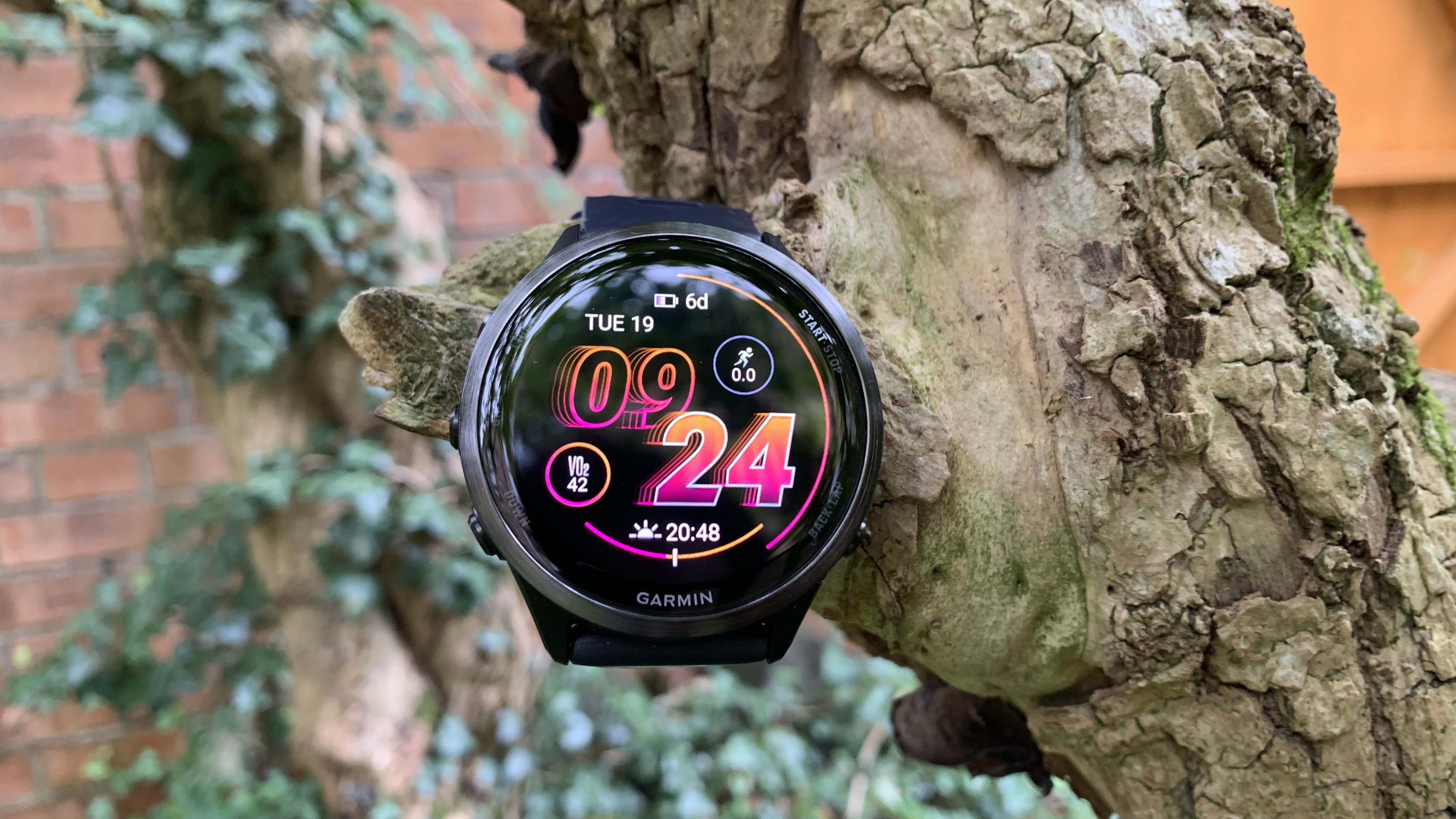Advnture Verdict
The Garmin 570 has taken everything that made the 265 an excellent GPS watch and, well, just made it all a little better. This version boasts an aluminium bezel and the screen is brighter and clearer than ever before, with pristine GPS and heart rate tracking thanks to an updated monitor. It's even added some more smartwatch functions, all without losing much battery life. That said, it still doesn't have proper maps or ECG functionality, and for the price, you might reasonably expect those features. If you already own a premium Garmin watch, you might not be as wowed, but if you've been cruising the trails for years with an old 945, it might just be time for an upgrade.
Pros
- +
Brightest AMOLED screen yet
- +
Extremely accurate GPS
- +
Elevate v5 heart rate monitor is excellent
- +
Quality build
- +
Comfortable on the wrist
- +
Responsive touchscreen and voice commands
- +
Good battery life
- +
Choice of case sizes
Cons
- -
Getting pricier
- -
No proper maps
- -
No ECG functionality
- -
No LED flashlight
You can trust Advnture
Garmin Forerunner 570: first impressions
In 2024, Strava's Year in Sport review revealed one clear winner when it comes to GPS watches: the Garmin Forerunner. While this Garmin range has earned its reputation as one of the brand's most dependable, there's always room for improvement, and ever since the 570 was announced as the official successor to the 265, we've been excited to see what's next.
The 265 was already an excellent entry-level triathlon watch with an AMOLED screen and was the first smaller Forerunner to feature touchscreen functionality. The 570 has taken that winning formula and added an even crisper screen, smartwatch functions similar to what you'll find in the Venu 3, so you can take and make calls from your wrist, and a new heart rate monitor, the Elevate v5, which provides really excellent tracking.
There are two sizes available, with the choice of a 42mm or 47mm case size and several fun colorways of silicone strap including Raspberry, Cloud Blue and Lemon Yellow, in addition to the bog standard black and grey. The aluminum bezel is a welcome upgrade that both looks and feels more robust, and the watch manages not to be too heavy despite it, weighing only 1.76oz (50g) for the larger size.
The design has no surprises: there's a Start/Stop and Back/Lap button on one side and Up, Down, and Light on the other, and Garmin has even been so kind as to label them, which is fantastically helpful. It's a high-profile watch, and by that we mean pretty bulky – enough that you'll find it annoying to wear with long sleeves – but really quite comfortable on the wrist.
Almost no matter what you're doing and how cold your hands are, it's easy to operate between the responsive touchscreen and voice commands, and the interface is really intuitive for a watch that has many options.
For features, there's not nothing here that we haven't seen before on another Garmin watch, but that doesn't mean it isn't feature-packed and everything works brilliantly. The new heart monitor is pristine, as is the GPS tracking, and it supports a ton of different activity modes, with a few intriguing additions like gravel biking and skate skiing. Though it's not a dive watch, you can take in the water for swimming and kayaking.
• List price: $549.99 / £459.99
• Case sizes: 42mm, 47mm
• Display: AMOLED
• Weight (47mm): 1.76 oz / 50g
• Battery life: Up to 10 days in smartwatch mode / up to 18 hours in GPS mode
• Water rating: 5ATM
• Materials: Alumnium bezel, Corning Gorilla Glass 3 lens, sillicone strap
• Best use: Trail running, hiking, swimming, cycling
It's probably more helpful to talk about what's missing than what's included. For starters, the Forerunner 570 still lacks proper maps, and while the line-and-pointer navigation does work, we think that with such a great screen and such a high price, it would be a great time to have added that function for outdoor adventurers.
All the latest inspiration, tips and guides to help you plan your next Advnture!
There is no LED flashlight (Garmin saves that for the newer Fenix and Enduro models), but there is the possibility of a white and red light screen for late-night rooting around.
It also still doesn't have ECG functionality, which again seems like it could have been an easy win, what with the updated HR monitor and price tag. Outside of that, you can expect all the metrics and tracking you've probably come to expect from Garmin, including Training Readiness Score, Training Status (which Garmin says is improved), Body Battery and Sleep Tracking.
The official battery life is up to 10 days in smartwatch mode and up to 18 hours in GPS mode. We turned off the Always On display, and even when using it in GPS mode for nearly 10 hours we got about a week out of a single charge.
All in, this is an improvement on its already-celebrated predecessor, and if you've been running with an old Garmin watch, you'll be thrilled with this watch's performance. That said, it is $200 / £150 more expensive than the 265, so it's starting to inch into the premium pricing zone. At that price, you might expect one or two extra bells and whistles, and if you already own a newer Garmin, we probably can't make the case for an upgrade.
Garmin Forerunner 570: in the field
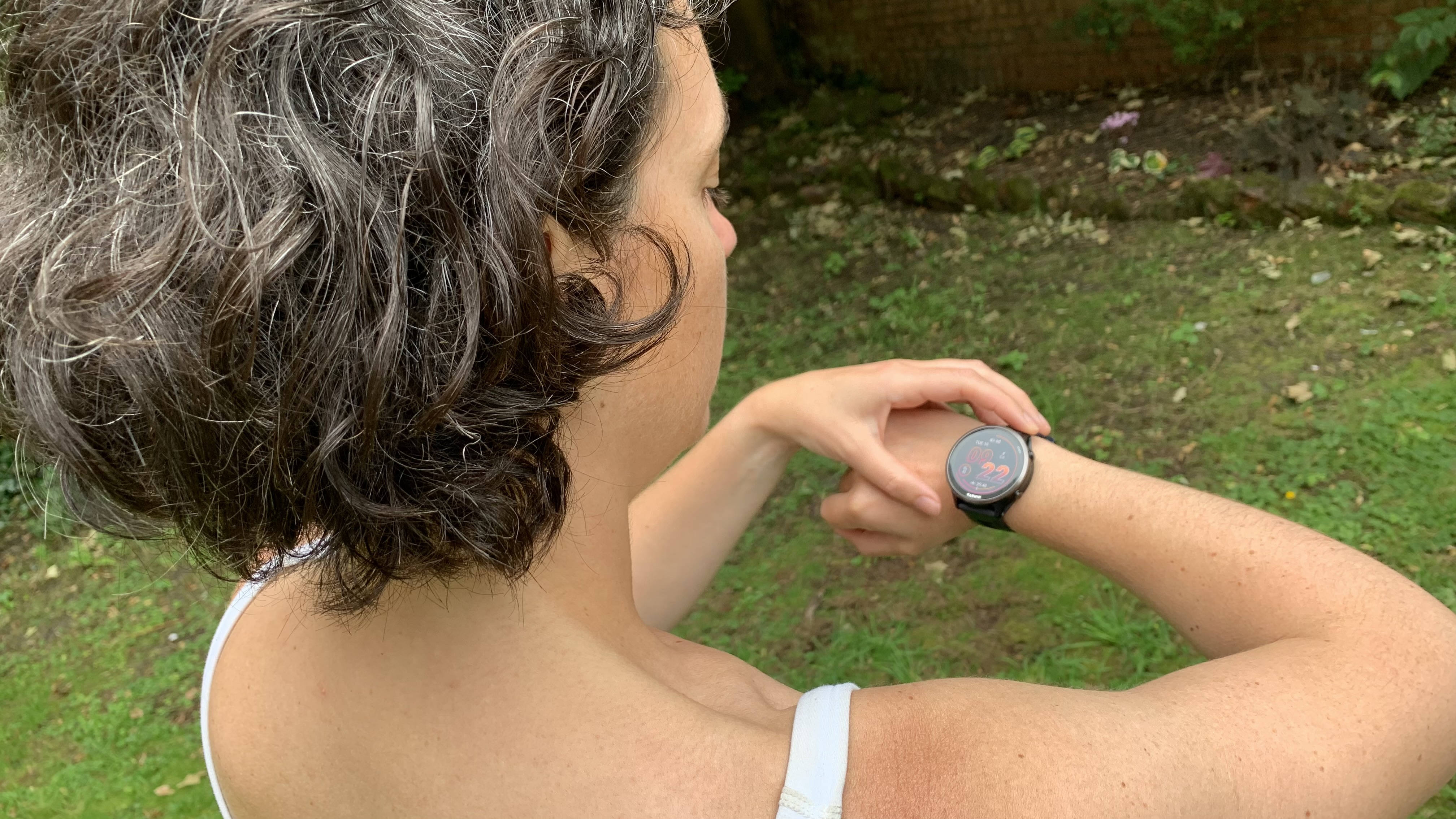
I've been testing the Garmin Forerunner 570 on the trails (and in the pool a couple of times) for the past three weeks, clocking up a fair amount of miles between hiking and trail running in Scotland and in the Ashdown Forest of England. I've been wearing it on my right wrist and my Coros Pace 3 on my left wrist to see how the two compare in terms of metrics.
Here’s how it performed:
Design
I tested the 47mm case, which really does look massive on my wrist, and it's almost as high profile as the big and bulky Fenix 8 at 12.9mm thick. If I were to choose, I'd certainly opt for the smaller case, but I think the watch will look big on just about every wrist.
That did mean I couldn't comfortably sleep with it on my wrist, which meant I missed out on some data. However, I really am surprised at how comfortable this watch is to wear. I don't usually get on with silicone straps all that well, but this one manages to fit properly and feel quite light and friendly on my wrist.
I've been testing it during summer, so I haven't had to struggle to wear it with long sleeves, but it is still annoying when I'm trying to pull my backpack or running vest on, and I'm sure winter would be a different story.
The flip side of that is that with the new aluminum case, it has a really robust build and feels like the high-quality watch that it is. I accidentally whacked it against the sharp edge of a metal trash can in London a few weeks ago while I was walking down a busy street, and, thankfully, it didn't leave a scratch.
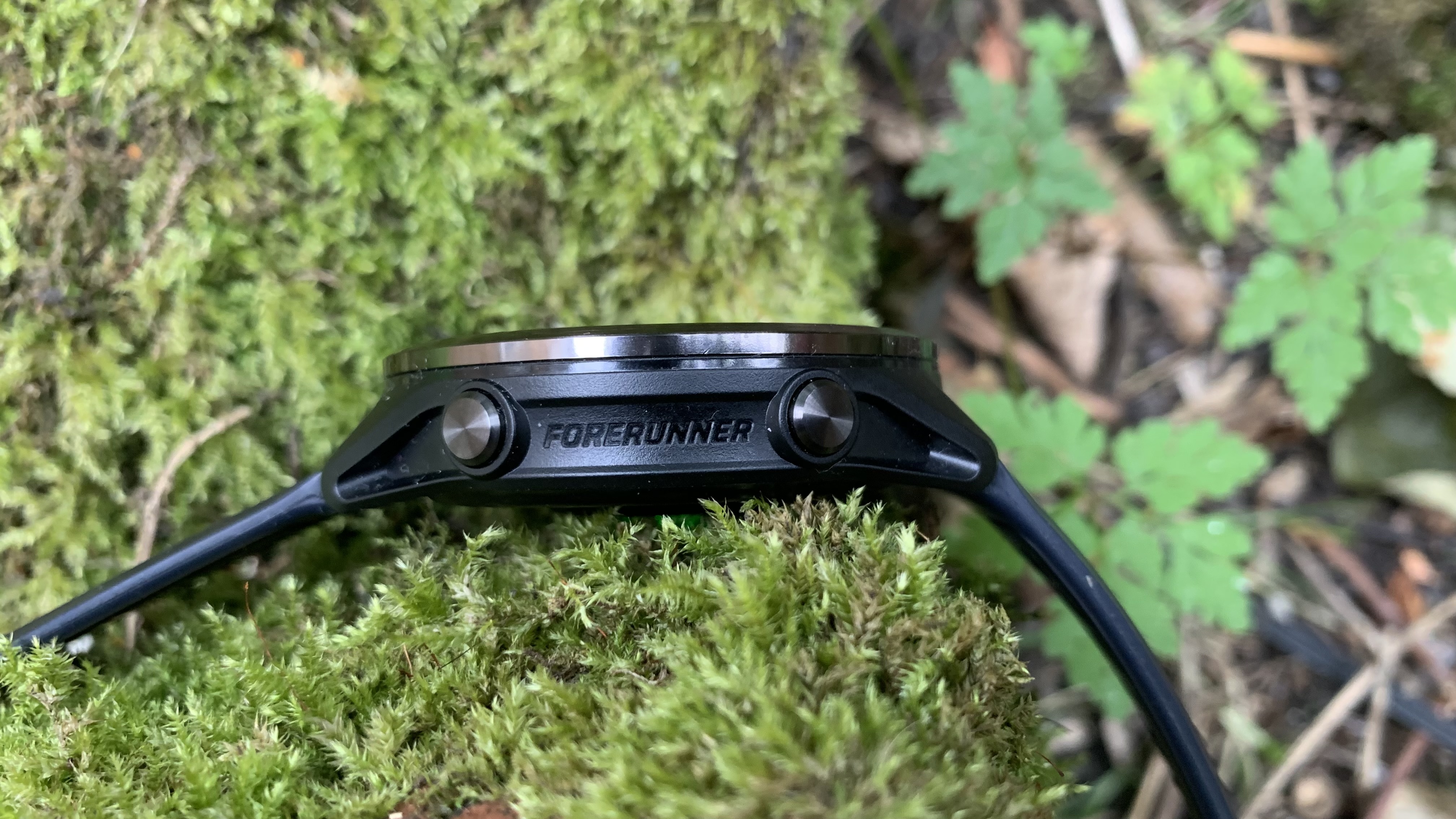
Features
This watch is packed with features, having kept everything from the Forerunner 265 and added more. When compared to other watches I've been testing, the new Elevate v5 heart rate monitor really is super precise.
You can scroll up from the home screen and quickly check Glance Folders like Training Readiness and Status, and the weather, and of course, this information is also delivered in a friendly morning and evening report, which I quite like.
Though I really wish it had proper maps, I used the line-and-pointer navigation on downloaded maps several times and found the GPS to be excellent. Other functions I used regularly on the trail are the Back to Start function, which gives you the option of retracing your steps, or going in a direct line, which could be risky in the wilderness, but elsewhere is a nice option if you need to get home fast. I also really appreciated that when I'm out on the trail, I can easily see how many hours I've got left until sunset.
Rather than the LED flashlight which I loved on the Fenix 8, it's just got a white and red light screen, which is somewhat useful for finding things in the dark when I'm getting ready for an early run, but not something that would provide much assistance on the trail.
The voice command works great and means that I can just double-press the Start button and say "start trail running" which works every time and means I never have to scroll to find the activity I want to do, and the touchscreen is really responsive.
I'm not so interested in the smartwatch functions, but I did test out the taking of a phone call, which is weird, but works, and there's music playback if you like to run to tunes.
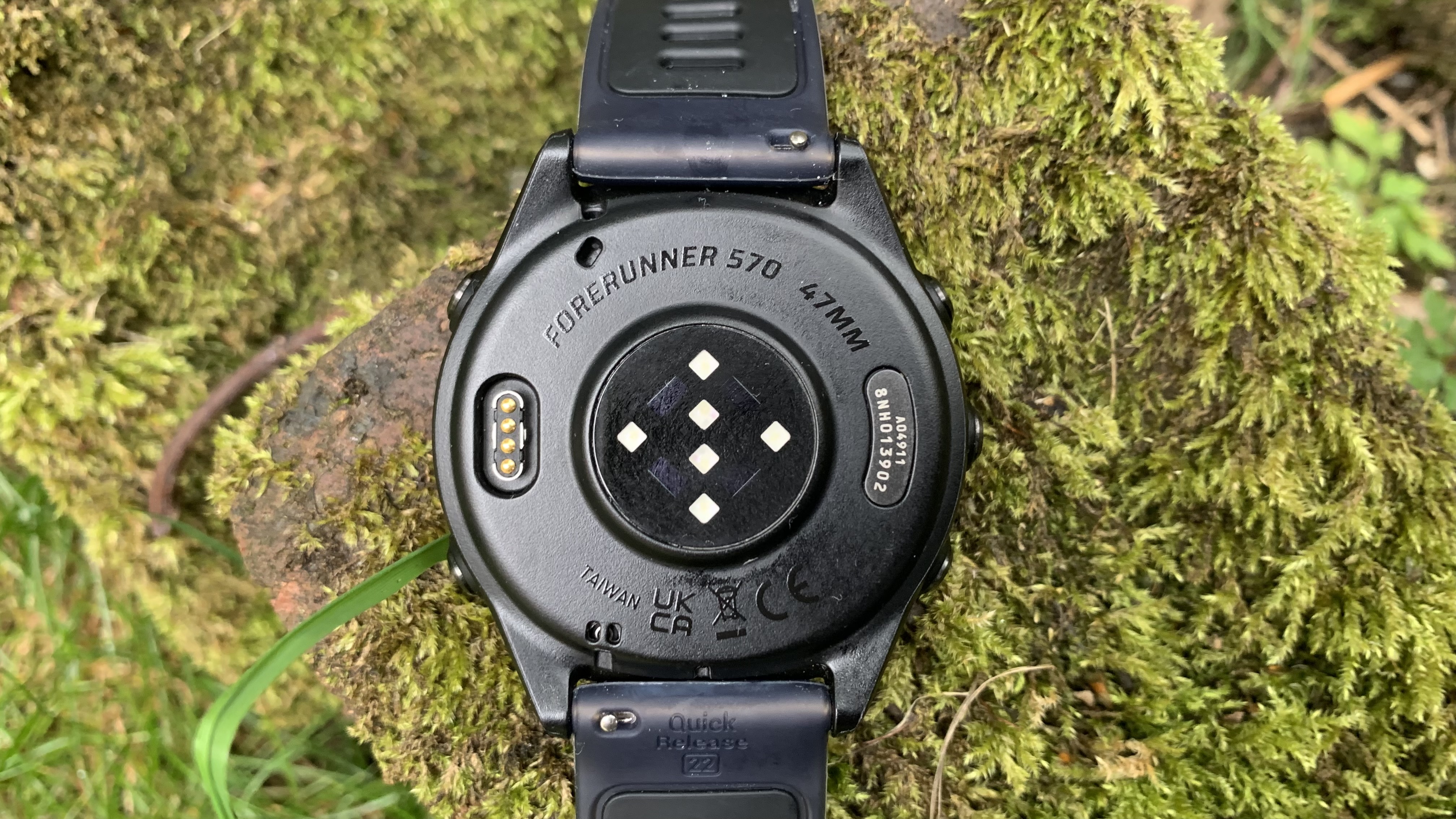
Performance
Once again, the 570 manages to have a really intuitive interface and I think the labelling of the buttons is just genius, so I didn't have to spend any time at all getting to know this watch. The big bright screen really is a joy to use no matter whether I'm running in blinding sunshine with polarized sunglasses or through the Scottish mist and rain.
I primarily use sports watches to navigate on the trail and to track my adventures, so I downloaded a few maps from AllTrails to test this functionality. It was all very straightforward except that on my first run in the Ashdown Forest, I had foolishly downloaded two possible routes the night before. The morning of, I hit start on the trail I intended to run on my watch, but then pulled up the other, longer route on my phone, and pretty quickly was wondering why the two devices were giving me different information. I was worried the GPS was off on the watch, but in fact it was entirely user error, and I was really pleased with how quickly the watch buzzed to let me know I was off route, and got me back to where I intended to be.
The next time, I got it right and tested it out on a trail I knew and confirmed that it is very precise. I used the Back to Start function several times on new routes through the trees and really love that function. For trail running, when I get ready to start the activity, I like that it gives me the option to select the day's suggested workout (e.g. Base Run or Tempo Run).
Because the watch has a brighter screen, the battery life is a little less than the 265, but compared to some other watches I've tested lately (ahem, Suunto Run) I was quite satisfied. After a full charge, I was able to wear it for a week that included nearly 10 hours on the trail and two pool swims before I needed to charge it again.
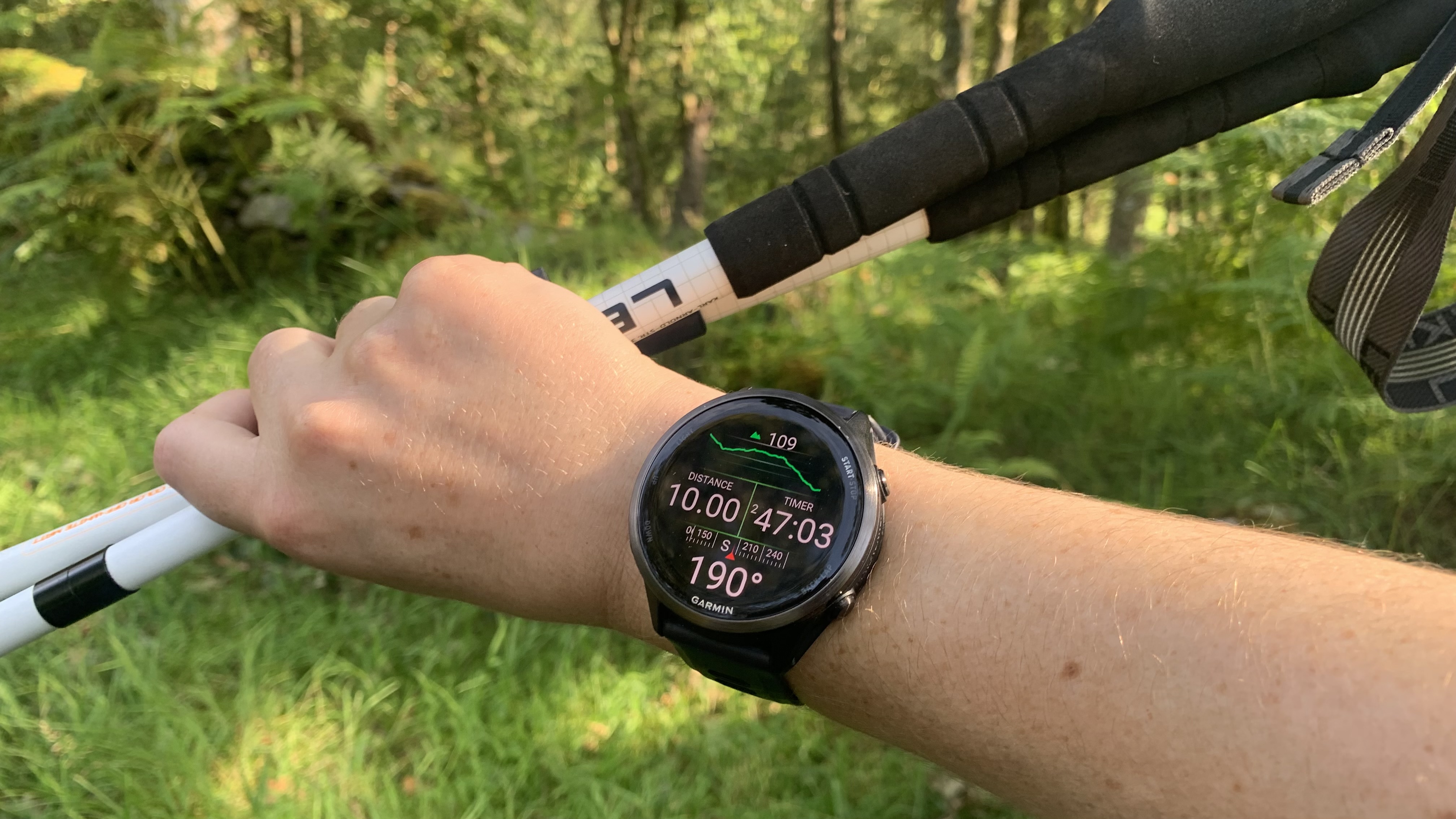
Value
While this is an undeniably brilliant Garmin watch, the real crux of the 570 is its hefty price tag. While it's not in the same realm as the Fenix 8 or Enduro 3, it's really creeping up there in terms of price, and even though it delivers a lot, I think it's reasonable to wonder why it doesn't have some features like proper maps.
Also consider
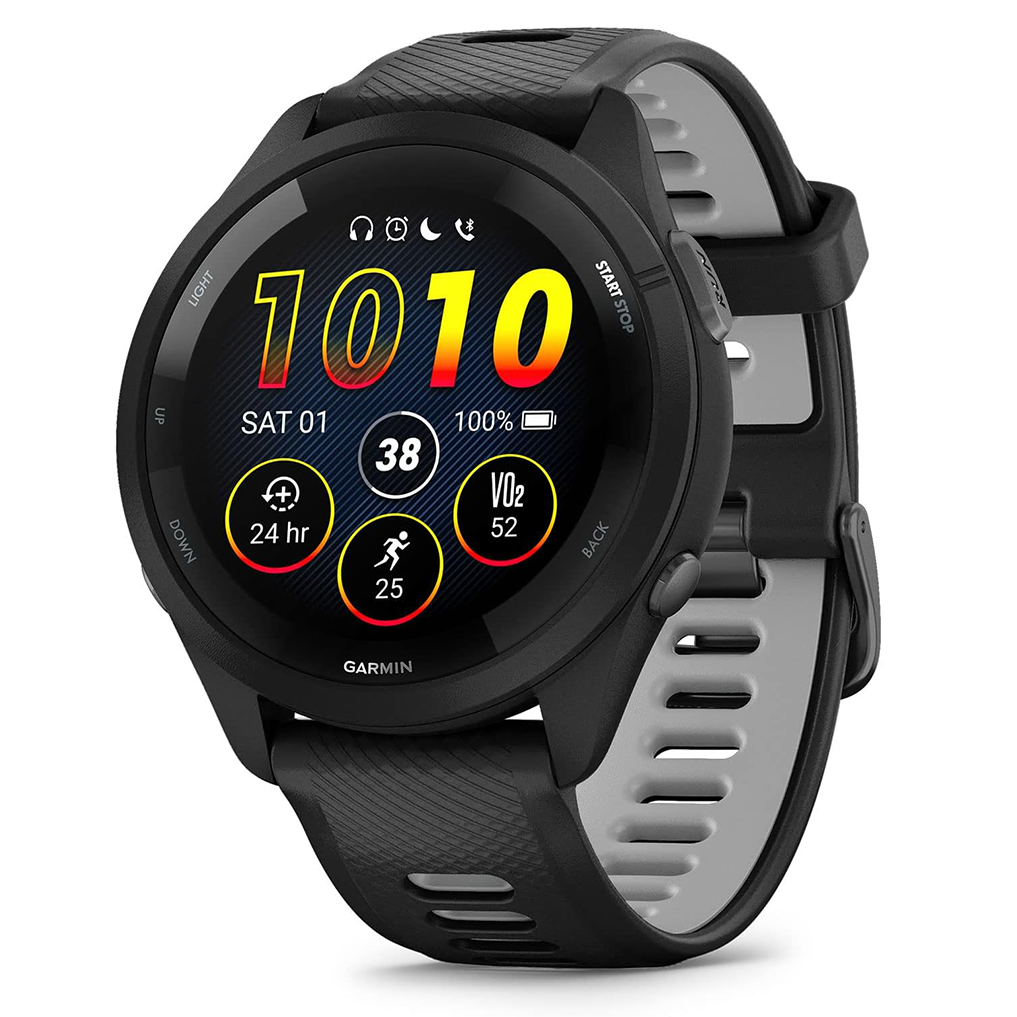
In many ways similar to the 570, the 265 has an AMOLED screen and touch control, while lacking proper maps and ECG functionality. It's an excellent mid-range watch for a variety of sports, and a good chunk cheaper than the 570.
Read our full Garmin Forerunner 265 review.
Pros
- Super lightweight and comfortable
- Great looking AMOLED display
- Very accurate GPS
- New touch controls
Cons
- Still lacks full maps

The Suunto Race S (and the bigger Race) is an excellent tactical training watch for tech nerds that has an edge over the Forerunner 570 in that it has proper maps for outdoor adventures. It's not as straightforward to use as the Forerunner (or any Garmin watch), but it has a similar battery life and a better price tag.
Pros
- Extremely accurate GPS
- Excellent battery life
- Proper offline maps
- Great training insights
- Super clear and bright display (easy to see in all conditions)
- High-quality build
- Responsive touchscreen
- Comfortable strap with innovative clip
- Reasonably priced (especially with AMOLED display)
Cons
- Takes a little while to get to grips with interface and maps
- Lacks proper flashlight
- High profile design not the best for sleeping
- Crown button a little fiddly
Comparison table
Watch | Garmin Forerunner 570 | Garmin Forerunner 265 | Suunto Race S |
|---|---|---|---|
Price | $549.99 / £459.99 | $349.99 / £299.99 | $349 / £325 |
Weight (smallest) | 1.48oz / 42g | 1.37oz / 39g | 1.76oz / 50g |
Display | AMOLED | AMOLED | AMOLED |
Sizes available | 42mm / 47mm | 42mm / 46mm | 45mm |
Best use | Trail running, Hiking, Swimming, Cycling | Trail running, Hiking, Swimming, Cycling | Trail running, Hiking, Swimming, Cycling |
Julia Clarke is a staff writer for Advnture.com and the author of the book Restorative Yoga for Beginners. She loves to explore mountains on foot, bike, skis and belay and then recover on the the yoga mat. Julia graduated with a degree in journalism in 2004 and spent eight years working as a radio presenter in Kansas City, Vermont, Boston and New York City before discovering the joys of the Rocky Mountains. She then detoured west to Colorado and enjoyed 11 years teaching yoga in Vail before returning to her hometown of Glasgow, Scotland in 2020 to focus on family and writing.
